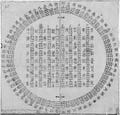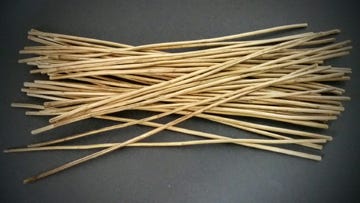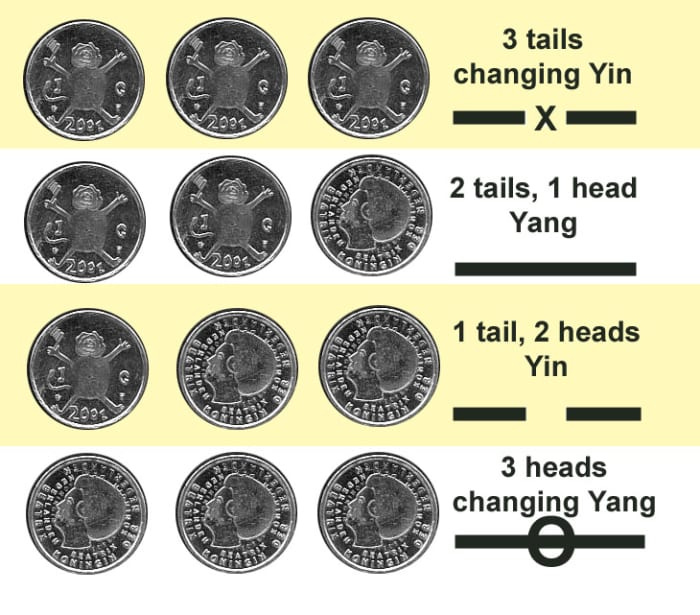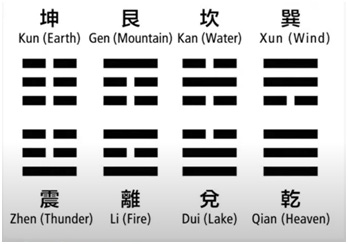The Yijing and Baguazhang
The relationship that fires up the imagination for movement and power
The Yijing (I Ching) has long fascinated me. I picked up my first copy of it around 1975 and felt immediately transported to ancient China. To my young mind it was a magical combination of symbolism, philosophy, wisdom, and divination.
When I opened the book for the first time, I was captivated by the forward written in 1949 by none other than Carl Jung. Wow, possibly the most influential psychologist of the century was a sinologist and user of this ancient text? My impression of the book suddenly became more serious.
At the time, I was also interested in the mysteries of the occult, hypnosis, consciousness studies, etc. so the Yijing fit in perfectly as I thought it was primarily for divination. What young mind would not want to know the future?
The instructions mentioned two ways to do a consultation. First, by the original method involving yarrow stalks and the more accessible one of tossing 3 coins. I didn’t even know what a yarrow stalk was so I used coins.
Imagine the thrill of anticipation as I tossed the coins expecting to learn the answer to a question about the future. I do not remember the question but suspect it had to do with getting something superficial that I wanted at the time. Such was the shallowness of my youth.
To say the answer was ambiguous understates my disappointment. It was not only vague and confusingly void of the simple yes or no I was looking for. It was clothed in symbolism derived from nature that seemed to have nothing to do with my question. What did “Thunder above Heaven” have to do with my all-important youthful whims?
Clearly, there was something more to this ancient text that was not immediately revealed to me at the time. I continued to read about it, obtained various translations, experiment with it, and be frustrated by it. All of this while not realizing that it was teaching me lessons all along. Namely, that the Yijing points to one’s own state of mind, not to external events. It is a book for introspection and wisdom more than divination. Further, it requires long study and experience to be able to best use it.
In 1996 I began to study the martial art of Nine Dragon Baguzhang with Dr. John Painter. I was almost immediately confronted with an entirely different way to understand the Yijing! It was directly related to how one uses body positions and movements for self-defense. This was not mentioned in any book I read and it was absolutely fascinating!
Imagine “becoming” Heaven, Earth, Fire, Water, Mountain, Thunder, Lake, Wind or some combination of them. Imagine a beguiling mystery becoming clear in way previously unimagined and yet profoundly potent. Imagine opening the book once again and seeing it with completely new ideas and applications! I had all this happen in a single Jiulong (Nine Dragon) lesson.
The lesson happened in January 1997 when I went to a “Heaven Palm” workshop with Dr. Painter. I was introduced to the structure of his Baguazhang system and was instantly captivated by the idea that the symbolic imagery of the Yjing could be used in a real-world way for self-defence and even further, for psychological well-being. I learned that with practice, combining the imagery with specific body positions could influence emotional and mental states. This was so cool!
Each of the eight trigrams, based on the nature imagery mentioned above, is represented in Nine Dragon Baguazhang by a position, movement, and attitude. There is too much to say about this here and I will talk about the ways I’ve experienced the Palms. Take a look at my post, “The Power of Wind, The Crash of Water” to get an idea.
Suffice it to say that as I learned how to combine the various positions, change from one position to another, express the mental/emotional attitude, and all of it done spontaneously, I felt like I was performing a piece of music. This was truly the art in martial art!
I realize that other Baguazhang systems are not connected to the Yijing. And some deny that there is a connection at all. That is perfectly fine with me since different systems evolved in their own way for their own reasons. If they function for someone, that is all that matters to that individual.
For me, having experienced equal parts of confusion and appreciation for the Yijing, being able to access it both as a mind-body-spirit practice along with the deep psychological insights it can provide, was a revelation to say the least!
Here is a short video of Dr. Painter explaining some of the symbolism. I shot this in 2010 a “Gathering of the Circle” weeklong workshop. It will give you some idea of the depth of knowledge the Nine Dragon Baguazhang system contains.
Do I still use the Yijing? Yes. But my relationship with it has evolved. Many of it’s lessons are now derived directly from my Nine Dragon practice. It would be fair to say it teaches me through movement and the forces I associate with the trigrams. This is quite personal so that’s as much as I will say.
The Yijing teaches me something new constantly and I am more grateful than ever for this deep relationship.








I read somewhere that the yijing & bagua represent science before mathematics, the fundamental forces of nature interacting with each other around and in us.
Considering the cultural desire to quantify everything, often reducing it to nothing if it can't be immediately used, the idea was welcomed.